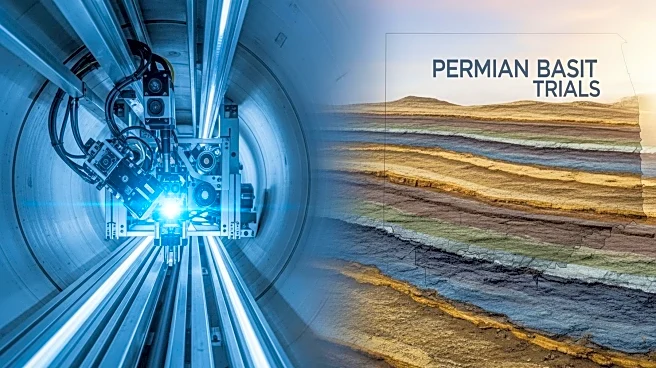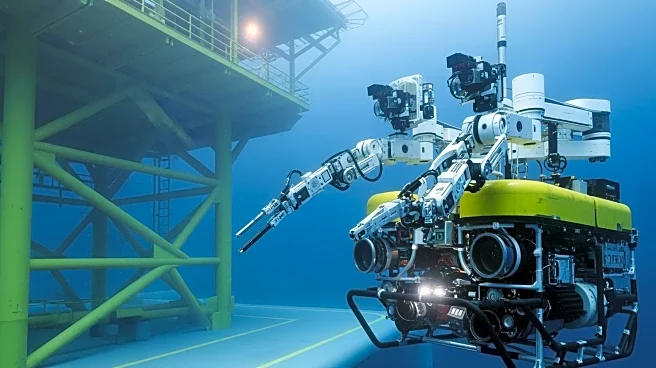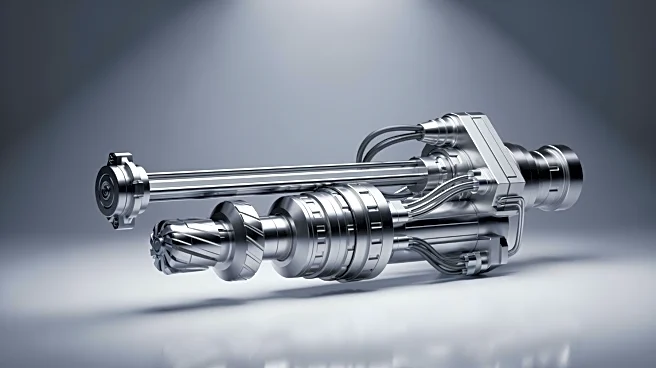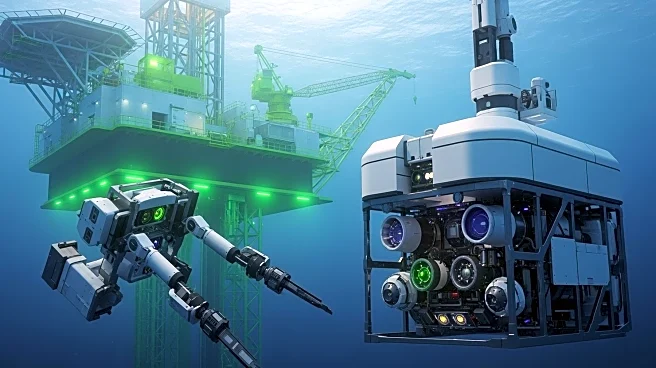What's Happening?
WellSense, a company specializing in fiber-optic well diagnostics, has successfully completed a field trial of its FiberLine Intervention Conveyance System (FliCS) in the Permian Basin. This innovative technology, developed at WellSense's Aberdeen R&D
hub, is the first jet-propelled, battery-powered well conveyance system capable of rapidly deploying bare fiber into highly deviated wells. The trial demonstrated the system's ability to deploy fiber in a 19,000-ft uncompleted horizontal well in just 50 minutes, significantly faster than traditional methods. The technology allows for fast, low-risk deployment of fiber for distributed acoustic sensing and distributed temperature sensing across reservoirs, enhancing treatment performance and reducing carbon footprint.
Why It's Important?
The successful trial of WellSense's FliCS technology marks a significant advancement in well surveillance solutions, offering a cost-effective and low-risk method for horizontal wells. This technology enables expanded injection profiling and improved understanding of fluid placement, which are crucial for optimizing reservoir management and enhancing treatment performance. By reducing the carbon footprint associated with well operations, FliCS aligns with industry efforts towards sustainability. The commitment from a major international operator to use this technology in additional projects underscores its potential impact on the oil and gas industry, particularly in improving operational efficiency and environmental responsibility.
What's Next?
WellSense plans to showcase the FliCS technology and its field results at the ADIPEC 2025 event, scheduled for November 3-6. Following this, a commercial launch is planned for early 2026, which will include a slimmer version of the technology for smaller-diameter tubing applications. The continued adoption of FliCS by industry operators could lead to broader implementation across various projects, potentially setting new standards for well surveillance and intervention techniques. Stakeholders in the oil and gas sector may closely monitor these developments as they consider integrating such innovative solutions into their operations.
Beyond the Headlines
The introduction of FliCS technology could have long-term implications for the oil and gas industry, particularly in terms of operational safety and environmental impact. By minimizing the risk associated with well interventions and reducing the carbon footprint, this technology supports the industry's shift towards more sustainable practices. Additionally, the ability to rapidly deploy fiber for high-resolution data acquisition may lead to more precise and efficient reservoir management, potentially influencing future technological advancements in the sector.













